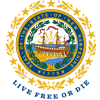Press Release
Contact
(603) 271-3136 | shelly.angers@dncr.nh.gov
Keep NH’s forests safe and healthy – leave camping firewood at home
The N.H. Division of Forests and Lands is reminding everyone who will be camping this summer that one of the easiest ways to keep our state’s forests healthy is to leave campfire wood at home and to purchase it locally when they arrive at their destination.
Studies by the NHDFL have shown that all untreated campfire wood carries insects and averages 35 insects in each stick. When this wood is transported from one region to another, it increases the chances of spreading invasive insects that have “hitchhiked,” heightening risks to forest health in places that those pests had not yet been present.
“Firewood is a major vector of new pests spreading to healthy forests,” said Kyle Lombard, program director for the NHDFL’s Forest Health Program. “Harmful species from the smallest flies to the largest longhorn beetles can be found in firewood.”
Campers are encouraged to look for firewood that has been harvested and gathered locally once they arrive at their destination. Most N.H. State Parks sell wood for campfires that has been kiln dried, which eliminates all pests.
“Packing for a camping trip can be overwhelming, so give yourself a break by making that task – and your load – lighter: don’t bring firewood with you,” said Lombard. “That opens up more room in your vehicle for s’mores, games and other items that will make your trip one to remember for all the right reasons.”
To find a local provider of firewood, visit firewoodscout.org. For more information about insects and firewood, visit NHBugs.org.
New Hampshire's Division of Forests and Lands is part of the Department of Natural and Cultural Resources. NHDFL’s mission is to protect and promote the values provided by trees, forests and natural communities. This mission is accomplished through responsible management of the state’s forested resources; by providing forest resource information and education to the public; and through the protection of these resources for the continuing benefit of the state’s citizens, visitors, and forest industry. Learn more at nhdfl.dncr.nh.gov.
###



